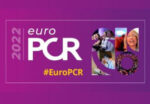Tricuspid failure (TF) mostly affects the elderly and, because of this, is associated with comorbidities that increase surgical risk. Tricuspid edge to edge repair (TEER) has surged as a valid alternative for the mitral valve in high-risk patients and, at present, is increasingly being used for tricuspids. One of the complications following TEER is acute...
Safety and Efficacy of Ticagrelor Monotherapy According to BMI
Obesity is growing dramatically around the world, regardless of income. For instance, 53% of US adults are obese, and 53% of people in the EU are overweight. The actual impact of elevated body mass index (BMI) in antiaggregation safety and efficacy, being it DAPT or SAPT, has not yet been properly looked at. This is...
TCT 2022 | Angioplasty vs. Surgery: The BEST Study Long-Term Results
The BEST study was a prospective, randomized study to compare percutaneous coronary intervention (PCI) with everolimus-eluting stents vs. myocardial revascularization surgery (MRS) in patients with multivessel disease. The analysis was interrupted early due to slow patient inclusion. The study included 880 patients, who were randomized 438 to the PCI arm and 442 to the MRS arm....
TCT 2022 | BYPASS CTCA
Studies have shown that the use of computed tomography cardiac angiography (CTCA) prior invasive coronary angiography (ICA) in patients with prior cardiac artery bypass graft (CABG) might reduce procedural time and post procedure kidney injury. 1 out of 5 patients with ischemic cardiomyopathy and prior CABG need to be assessed with ICA within 3 years...
Primary vs Secondary Retrograde Approach in CTO: Differences
Successful chronic total occlusion procedures are on the rise, especially in high volume centers, seeing as they count on more sophisticated materials and different techniques, such the retrograde approach. However, the significant increase of success rate with this technique has also brought along an increase in associated complications. The aim of this study was to...
RIPCORD 2 Study: Routine Assessment Using Pressure Wires in Acute Coronary Syndrome
The inclusion of fractional flow reserve (FFR) has changed how coronary interventions are treated. Current guidelines endorse its use in intermediate lesions with no evidence of ischemia in non-invasive studies in patients with multivessel disease. The original RIPCORD (Routine Pressure Wire Assessment Influence Management Strategy at Coronary Angiography for Diagnosis of Chest Pain) study proposed...
Same Day Discharge in NSTE-ACS: Is It Possible?
At present, percutaneous coronary intervention (PCI) is the most common coronary revascularization strategy. One of its benefits is that patients can be safely discharged when procedures are programed, which helps decompress hospital capacity. However, this strategy has not been validated for acute coronary syndromes; the evidence gathered for non-ST elevation ACS is far from robust,...
Two Safe Stents at Two Years in High Bleeding Risk
There is a consistent number of patients presenting high risk of bleeding. In this context, receiving dual antiplatelet therapy (DAPT) for 12 months would not be advisable. Even though the European and American guidelines recommend 1 to 6 months for chronic and acute syndromes in this group, these are often complex PCI cases, which makes...
PCI on Native Arteries or Saphenous Vein Grafts: Which Has Better Prognosis?
New revascularization after coronary artery bypass graft (CABG) is often needed, be it because of severe bridge lesion, intimal hyperplasia, thrombosis, atherosclerosis, or native vessel lesion progression. We therefore need to determine the best revascularization strategy, namely native or graft percutaneous intervention, venous or arterial, or repeat surgery, with the risk it entails. There is...
EuroPCR 2022 | CLASP TR Study: Promising Results of Endovascular Intervention of Tricuspid Regurgitation
At present, we are well aware of the rise in mortality caused by severe tricuspid regurgitation (TR). Medical and surgical treatments have turned out to be suboptimal. Hence, endovascular intervention presents as an alternative therapeutic strategy with promising results. The aim of this multicenter, prospective study was to assess the safety and efficacy of the...








